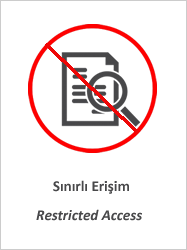Energy Density Optimization in Laser‑based Powder Bed Fusion of Nano‑Modified PA12 Powder Feedstocks

Göster/
Erişim
info:eu-repo/semantics/embargoedAccessTarih
2025Yazar
Grünewald, MoritzZiefuss, Anna R.
Schlör, Christian
Popp, Kevin
Gann, Stan
Kuşoğlu, İhsan Murat
Barcikowski, Stephan
Greiner, Joachim
Middendorf, Peter
Gruber, Piotr
Olejarczyk, Michał
Kurzynowski, Tomasz
Wang, Zhengze
Huang, Yajiang
Coşkun, Mert
Kısasöz, Burçin Özbay
Koç, Ebubekir
Rudloff, Johannes
Üst veri
Tüm öğe kaydını gösterKünye
GRÜNEWALD, Moritz, Anna R. ZİEFUSS, Christian SCHLÖR, Kevin POPP, Stan GANN, İhsan Murat KUŞOĞLU, Stephan BARCİKOWSKİ, Joachim GREİNER, Peter MİDDENDORF, Piotr GRUBER, Michał OLEJARCZYK, Tomasz KURZYNOWSKİ, Zhengze WANG, Yajiang HUANG, Mert Coşkun, Burçin Özbay KISASÖZ, Ebubekir KOÇ & Johannes RUDLOFF. "Energy Density Optimization in Laser‑based Powder Bed Fusion of Nano‑Modified PA12 Powder Feedstocks". Journal of Materials Science, 60 (2025): 12056-12071.Özet
Additive manufacturing (AM) by powder bed fusion using a laser beam (PBFLB)
is often considered as the process of choice for industrial applications. Small
changes in process parameters and intrinsic or extrinsic material parameters can
significantly affect the final as-built part properties in this highly complex AM
process. Choosing a machine configuration with optimal process parameters can
be time-consuming, especially when new powders, i.e., nano-modified feedstocks
or batches, are used. Even if a set of parameters works for one PBF-LB machine,
the same parameters may produce unsatisfactory results on another machine
model. Dimensionless parameters can be beneficial in simplifying complex phenomena.
In this study, a semi-analytical approach based on printing monolayers
was semi-blind tested by five laboratories on different PBF-LB machines. Virgin
polyamide 12 (PA12), silver, and carbon black nano-particle-modified PA12
powders were tested. Two dimensionless numbers were used to describe the
process. The first number describes the energy conversion dimensionless. The
second dimensionless number proposes a minimum energy input demand for
full densification. Both numbers combine process parameters (e.g., laser power, scan speed) and material properties (latent heat and solid density), while energy
conversion number is considered by experimental results (monolayer thickness).
Results indicate how nanoparticles influence thermal conductivity and energy
absorption. Suggested surface energy densities based on the dimensionless numbers
were compared with mechanical properties. The prediction of the highest
overall mechanical values (tensile strength and elongation at break) matched the
best mechanical properties. The monolayer approach presents an experimental
simple method for predicting suitable machine settings and narrowing the process
window in an efficient and material-conserving way.


















